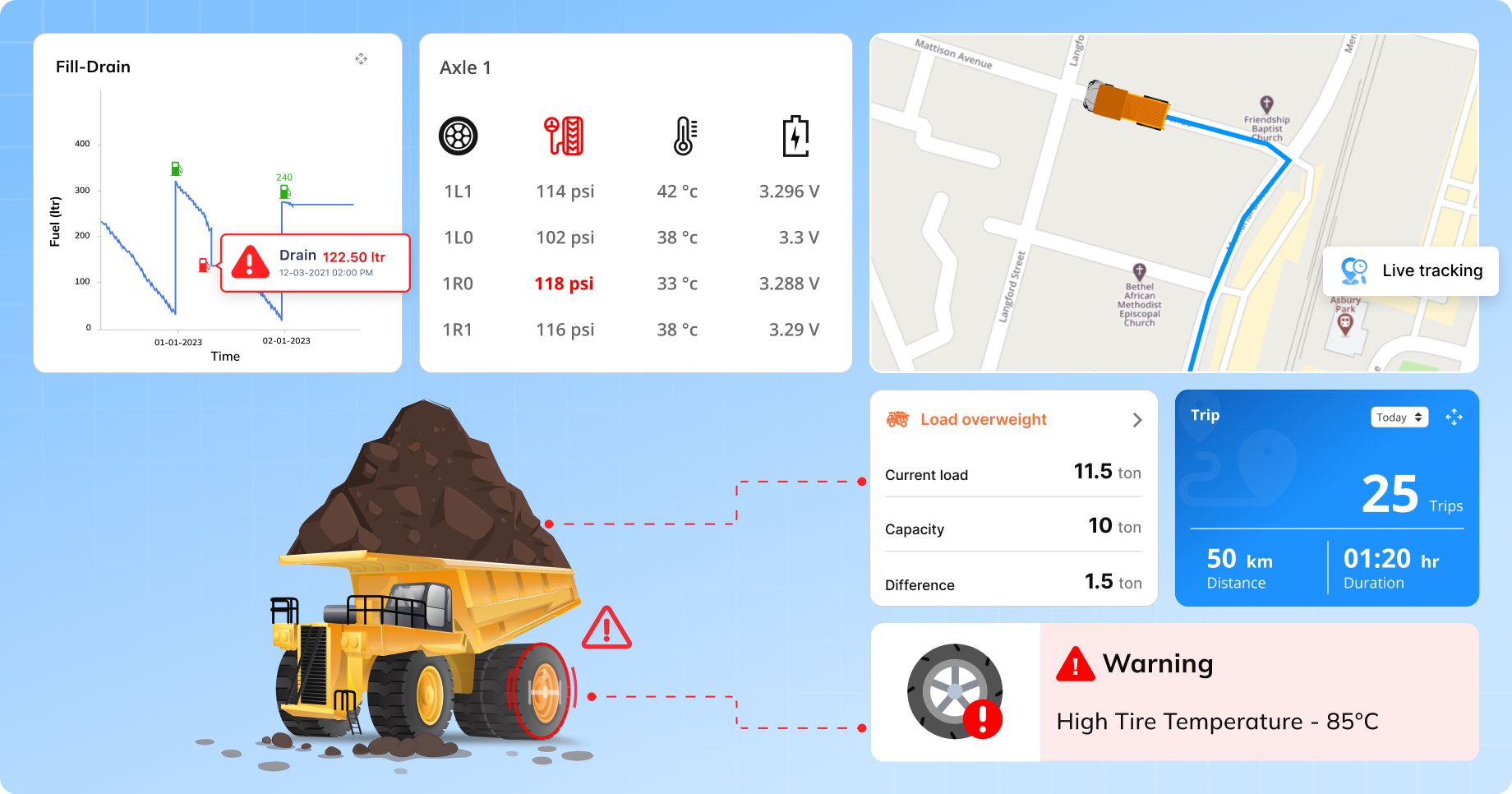Mining fleets operate in harsh, isolated terrains with heavy-duty vehicles like dumpers, loaders, and excavators working around the clock. These assets are prone to wear and tear due to extreme usage and rough conditions. With vast mine zones and deep operations, manual tracking leads to inefficiencies, safety risks, and poor resource planning.
Solving Real Fleet Challenges in the Mining Industry
Introduction
Challenges
- Limited visibility in certain mining zones: In deep or remote sections of the mine, standard GPS tracking may become inconsistent. Without reliable visibility, managers face delays in locating assets or coordinating movement across working areas.
- Overloaded vehicles and poor load tracking: Dumpers and haul trucks are frequently loaded beyond capacity to save time. Without accurate tracking of load cycles or weight, this leads to faster wear and unexpected failures.
- Fuel theft during on-site refueling: Fuel is supplied and refilled inside the mine using bowsers. In the absence of proper monitoring, fuel theft or inaccurate logging becomes a common issue, increasing operational loss.
- Unmonitored tire wear on rough surfaces: The rocky and uneven terrain inside mining zones causes fast and uneven tire wear. Manual checks often miss early signs of damage, which can lead to sudden breakdowns or safety risks.
- No structured maintenance records: Vehicles are used across multiple shifts without proper logging of their health status. With no clear service history or alerts, breakdowns occur frequently, and repairs take longer due to site conditions.
- Limited tracking during night or shift changes: Mine runs continuously with different shifts, including night operations. Without a proper tracking mechanism, vehicle activity during these hours often goes unrecorded, leading to performance gaps.
Solution
- Live tracking with delivery status updates: Track every logistics vehicle in real time across highways, cities, or remote regions. View current location, delivery progress, and estimated arrival time. Get notified instantly if a vehicle is delayed or goes off route.
- Driver behavior monitoring tools: Track driver activity throughout the trip with complete visibility. Get alerts for long halts, route changes, or overspeeding. Identify risky patterns like harsh braking or quick acceleration to improve safety and driving standards.
- Fuel tracking to prevent misuse: Keep a close watch on every fuel fill and usage pattern. Get alerts for sudden drops or irregular consumption. This helps prevent fuel theft, avoid hidden losses, and stay within budget.
- Route and job planning tools: Plan the best delivery routes based on location, traffic, and delivery time. Assign the right job to the right vehicle without delays. This improves trip efficiency, reduces confusion, and helps complete deliveries on time.
- Maintenance alerts based on usage: Set service reminders based on mileage or engine hours. Get notified before a breakdown happens. Ensure timely maintenance to keep vehicles road-ready and reduce repair costs.
- E-lock support for consignment security: Use electronic locks that can be remotely managed and tracked. Allow only approved unlocks at verified delivery points. Get alerts for forced entry or route deviations, ensuring goods remain secure until delivery.
Results
- Increased vehicle visibility across mining zones: Real-time tracking helped managers locate vehicles faster, even in remote sections. This improved coordination across haul, dump, and loading points.
- Lower fuel losses and better usage control: Monitoring on-site refueling and consumption patterns reduced fuel theft. This brought more accountability and reduced operating expenses.
- Reduced unplanned breakdowns and tire-related delays: Timely maintenance alerts and better tire tracking prevented sudden failures. This kept the fleet running smoothly and improved overall uptime.




